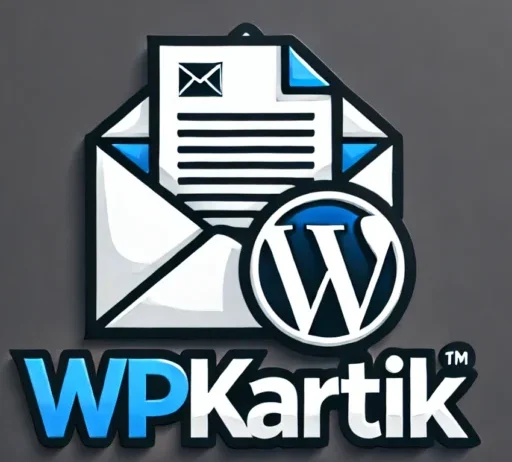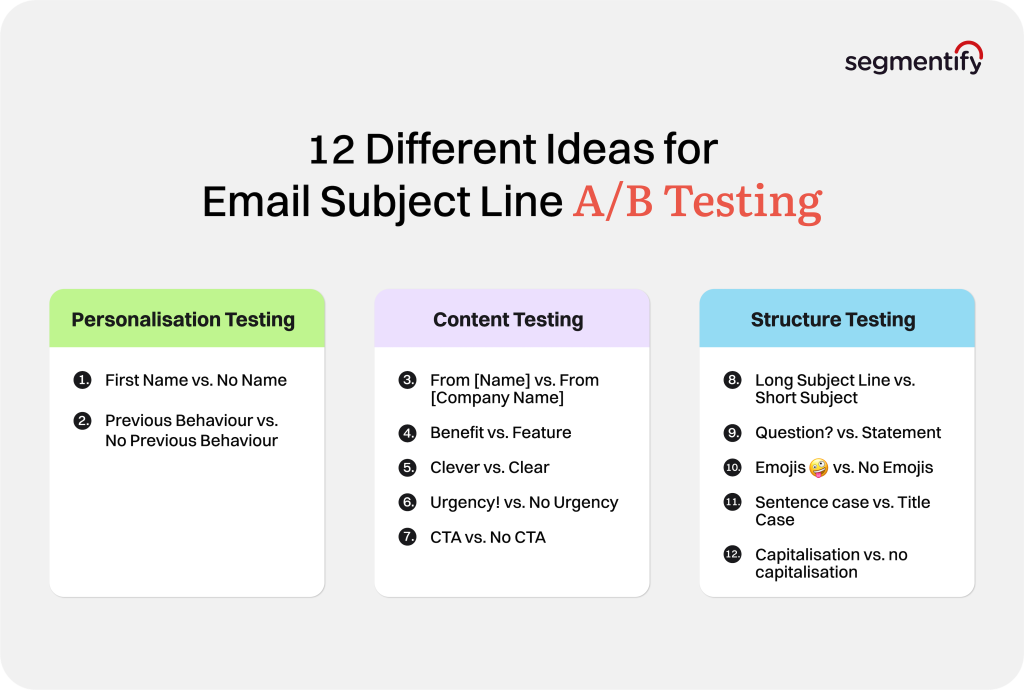Last updated on April 17th, 2025 at

Kartik Sharma ✅
Reviewed by Email Marketing Expert
Kartik Pandit, Founder of WPKartik
6+ years of experience helping businesses boost revenue through high-converting email campaigns.
Ever spent hours crafting the perfect email… only to get zero replies and barely any opens?
Yep, I’ve been there too. I thought the problem was my email content—but turns out, it was something way smaller (and way more powerful): the subject line.
Think about it: your email subject line is the first thing people see. It’s like the headline of a news article or the cover of a book. If it doesn’t grab attention, your email might as well not exist.
Once I started paying attention to email subject line best practices, things changed fast. My open rates shot up. People actually started reading what I sent. And no, I didn’t use clickbait or weird marketing tricks—just simple, smart strategies that work.
In this guide, I’m not just throwing theory at you. I’m showing you the exact subject line best practices I’ve tested myself—the ones that get real results. You’ll learn:
How to write good subject lines for emails (even if you’re not a copywriter)
And how to make sure your subject line doesn’t get ignored (or land in spam)
By the end of this, you’ll know how to subject an email the right way—and how to make your emails stand out in a crowded inbox.
Let’s dive in. You’re gonna love how simple this actually is.
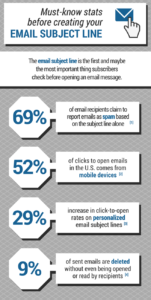
What is a Good email subject line (That Actually Get Clicks)
According to email research by Zippia, 47% of email recipients open an email based on the subject line alone. At the same time, 69% of email recipients report emails as spammy based solely on the subject line.
So… what does a good email subject line even look like?
Let’s break it down: A good subject line is short, clear, and makes the reader curious enough to open the email. It doesn’t try too hard, it doesn’t confuse people, and it definitely doesn’t scream “spam.”
Here’s what makes a subject line work:
✅ It’s clear, not clever
Trying to be too witty can backfire. Most people skim their inbox fast—if your subject line isn’t instantly clear, they’ll skip it.
Example:
🚫 “Guess what happened next…”
✅ “How I doubled my open rate in 7 days”
✅ It speaks to the reader’s need
Think about what your audience cares about. Is it saving time? Getting more customers? Avoiding mistakes?
Example:
✅ “5 email mistakes that kill your open rates”
✅ It’s personal
Adding a name or making it feel personal (like you’re talking directly to them) can boost opens.
Example:
✅ “Sarah, you’re missing out on this free tool”
✅ It’s short and scannable
Keep it under 50 characters when you can. Most people read emails on their phone, and long subject lines get cut off.
👉 And guess what?
These are just a few. I’m working on a full list of 100 good email subject line examples that you can copy, tweak, or use for inspiration—coming up right after we go through the core email subject line best practices.
Stick around. You’ll never run out of subject line ideas again. 💌
Best Practices for Email Subject Lines – (12 Personal Proven Tips)
1. Personalize Your Subject Lines
Personalizing your subject lines helps your email stand out and grabs attention. People are more likely to open an email that feels like it was sent just for them.
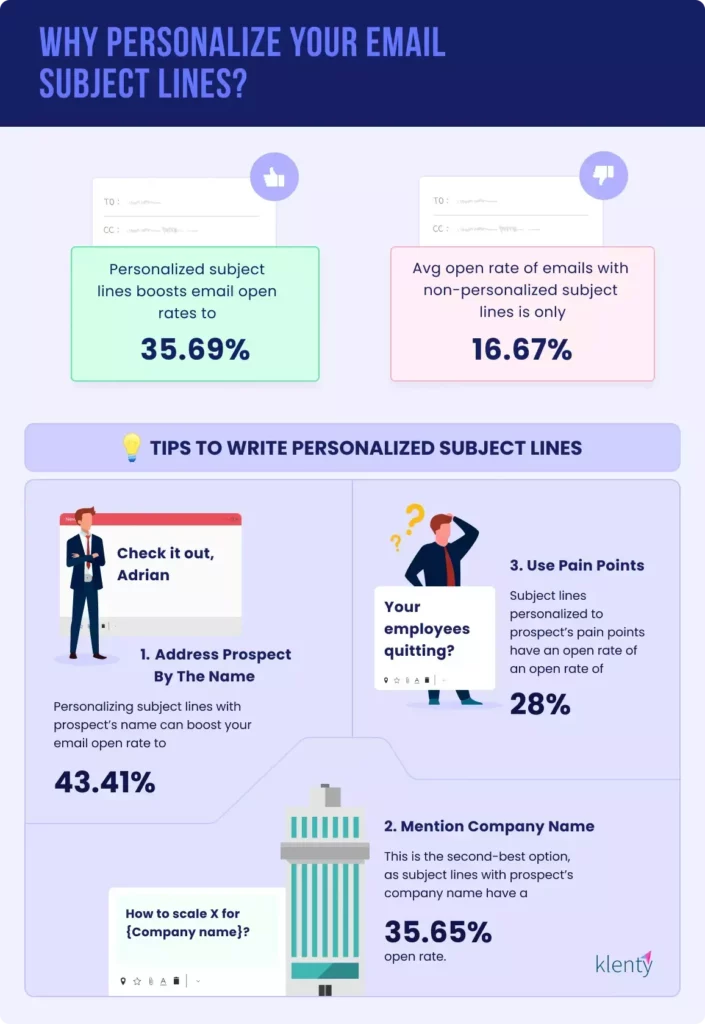
Why it works:
It catches attention: Using the reader’s name makes the email feel personal and less like spam.
It makes them feel valued: Personalization shows you’re thinking about their interests.
It increases open rates: Emails with personalized subject lines have higher engagement.
How to do it:
Use the reader’s name:
Adding someone’s name in the subject line can make them feel special.
Example: “{$name}, quick follow-up!”Reference something they care about:
If they signed up for a freebie, remind them. If they’ve clicked on similar offers, mention that.
Example: “{$name}, here’s your freebie!”Create exclusivity:
Make them feel like they’re part of a select group or getting something extra.
Example: “{$name}, it’s bonus sale day!”
Quick Tip:
Don’t overdo it. Personalize where it makes sense, but don’t force it. Keep it natural and relevant.
2. Be Clear and Specific
When it comes to email subject lines, clarity is key. If your subject line is vague or confusing, people won’t know what to expect — and they’ll skip it. 🏃♂️
Why it works:
✅ It builds trust: Clear subject lines tell your reader exactly what they’ll get.
🔍 It avoids confusion: Specificity ensures the reader knows it’s something they care about.
📈 It improves open rates: Straightforward emails get opened more often.
How to do it:
🎯 State the benefit clearly:
Let them know what’s in it for them!
Example: “5 email mistakes that kill your open rates”🚫 Avoid mystery:
People don’t want to guess. Be clear about what you’re offering.
Example: “Here’s your 10% off coupon!”📩 Keep it direct:
Keep it simple, no fluff.
Example: “Thanks for subscribing! Here’s your gift!”
Quick Tip:
Be specific without making it too long. A clear, concise subject line will always win over a vague one. 😉
3. Keep It Short and Focused
Short and sweet wins every time! 🏅 People skim their inboxes quickly, so if your subject line is too long, it’s going to get cut off — especially on mobile. 📱
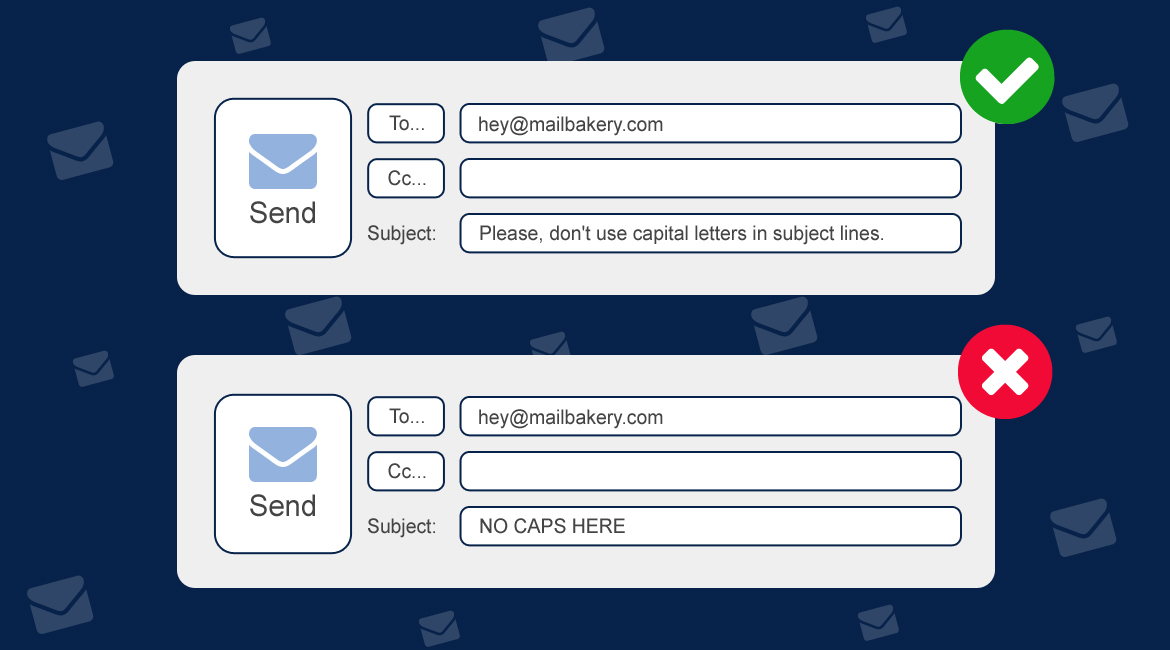
Why it works:
⚡ Quick to read: Short subject lines are easy to scan and don’t get cut off.
📉 Reduces clutter: Focused subject lines deliver a clear message without confusion.
📲 Mobile-friendly: Most people read emails on their phones, so keep it under 50 characters!
How to do it:
✂️ Be concise:
Stick to one clear idea.
Example: “Your 20% off coupon!”🎯 Focus on the most important info:
Get to the point without extra words.
Example: “Thanks for signing up! Here’s your gift.”🧑💻 Test shorter subject lines:
Short and clear often performs better than long and complicated.
Quick Tip:
Aim for 40-50 characters. It’ll help make sure your subject line is fully visible and doesn’t get lost in the inbox! 👀
4. Use a Single, Relevant Emoji
Emojis can make your subject lines pop and grab attention! But use them wisely — too many emojis can be distracting. 🎨

Why it works:
👀 It grabs attention: Emojis stand out in the inbox and draw eyes to your email.
💬 It adds personality: A relevant emoji can give your email a friendly tone.
⚡ It adds clarity: Emojis can emphasize the message in your subject line.
How to do it:
🎯 Pick one emoji that fits the message:
Don’t overdo it. Choose one that relates directly to your email content.
Example: “Last chance to grab your FREE gift! 🎁”👋 Use emojis to set the tone:
Choose emojis that match the vibe you want to convey.
Example: “Thank you for subscribing! 🙏”🚀 Keep it simple:
Stick to one emoji. Too many can clutter your subject line.
Quick Tip:
Use emojis that match your message and make sure they’re relevant. It should enhance your subject, not confuse it! 😊
5. Avoid Overusing Punctuation
Using too many punctuation marks, like !!! or ???, can make your subject line look spammy. 🚫 Keep it clean and simple.
Why it works:
⚠️ It looks professional: Too many exclamation points or question marks can make you look untrustworthy.
❌ It avoids being flagged as spam: Spam filters often catch subject lines that use excessive punctuation.
📩 It’s easier to read: A subject line without too much punctuation is more straightforward and appealing.
How to do it:
🚫 Limit exclamation points:
One is usually enough to show excitement.
Example: “Your 20% off coupon is waiting!” (Not: “Your 20% off coupon is waiting!!!”)❓ Use a question mark sparingly:
Only use it when it makes sense, and keep it focused.
Example: “Ready to boost your open rates?”✅ Stick to one punctuation mark:
Too many punctuation marks confuse the reader and make your email look unprofessional.
Quick Tip:
Less is more when it comes to punctuation. Keep it simple to maintain a clean and trustworthy image. 😊
6. Highlight the Value or Benefit
Your subject line should tell readers what’s in it for them. What’s the value they’ll get by opening your email? 🎁
Why it works:
💡 It sparks curiosity: People want to know what’s in it for them.
💪 It shows benefit: Clear value promises make your email irresistible.
📈 It boosts open rates: When people see something useful, they’re more likely to open your email.
How to do it:
🎯 Focus on the benefit:
What will they get by opening? Whether it’s a discount or helpful tip, make it clear.
Example: “Get your free eBook today!”💸 Offer something valuable:
Let them know they’re getting something extra for opening your email.
Example: “Unlock 20% off your next purchase!”🎉 Make it clear, make it compelling:
Focus on a clear outcome or result.
Example: “Boost your email open rates in 7 days!”
Quick Tip:
People open emails that promise something useful. Show them exactly what they’ll gain by reading your email! 🚀
7. Create a Sense of Urgency (But Be Honest)
Urgency can push readers to take action quickly, but don’t mislead them. Be honest while still making it clear that they shouldn’t wait too long. ⏳
Why it works:
🔥 It motivates action: People are more likely to open emails when they feel they might miss out.
⚠️ It creates excitement: Urgency makes your offer feel more valuable and timely.
✅ It encourages quicker decisions: Readers know they need to act fast to get the deal or offer.
How to do it:
⏰ Mention deadlines:
If an offer expires soon, let them know.
Example: “Last chance to get 20% off! Ends tonight!”⚡ Use “limited time”:
Make it clear that the offer won’t last forever.
Example: “24-hour flash sale! Don’t miss out!”🚨 Add urgency without exaggerating:
Don’t overpromise. If it’s a limited-time offer, say so.
Example: “Today only: Get your free trial!”
Quick Tip:
Honesty is key. Be clear about the time-sensitive nature, but don’t trick your readers into thinking something is urgent when it’s not. 🚨
8. Use Proven High-Performing Keywords
Certain words in your subject line can boost open rates because they’ve been proven to grab attention. 🏆 These keywords speak directly to your reader’s needs, wants, or emotions.
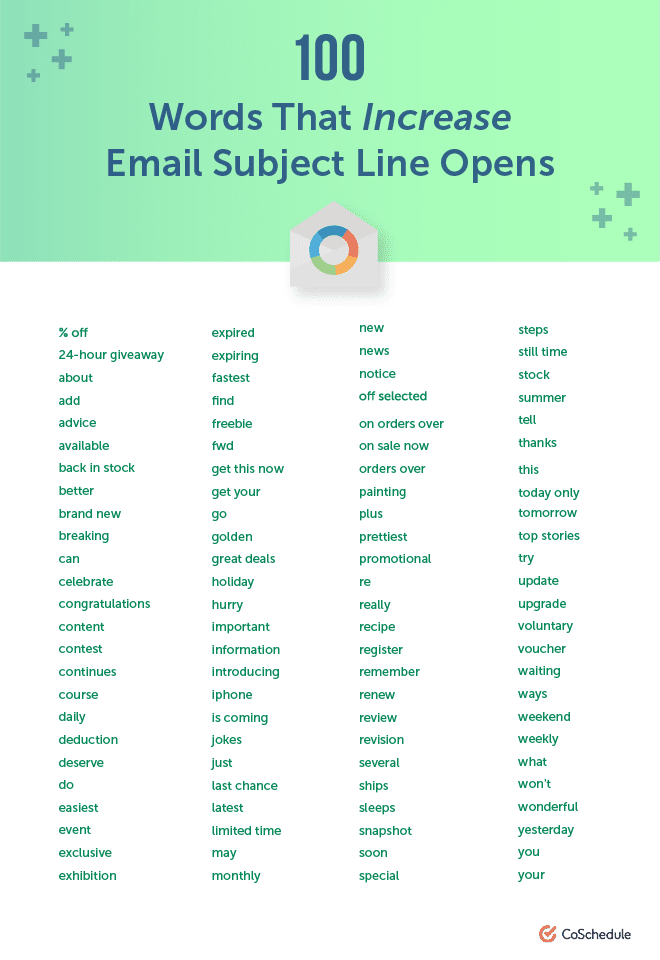
Why it works:
📈 It drives action: Words like “free,” “exclusive,” or “limited time” trigger curiosity.
💡 It connects with emotions: Words that promise a benefit or solve a problem are highly effective.
⚡ It boosts engagement: Certain words consistently perform well in subject lines.
How to do it:
💸 Use action-oriented words:
Focus on words that prompt immediate action.
Example: “Grab your free gift today!”🎯 Include value-driven words:
Use words that highlight value, like “free,” “bonus,” or “exclusive.”
Example: “Exclusive offer just for you!”🚀 Add urgency with time-sensitive words:
Use words that imply limited availability, like “limited,” “last chance,” or “expires soon.”
Example: “Hurry! Last chance to save 50%!”
Quick Tip:
Words like free, exclusive, bonus, and limited time can work wonders, but make sure they match your email content!
9. Avoid Low-Performing or Spammy Words
Certain words can hurt your open rates because they trigger spam filters or make your emails look untrustworthy. 🚫 Avoid these words at all costs!

Why it works:
🔒 It keeps your emails out of spam: Words like “free” (overused), “guaranteed,” or “click here” can land your email in the spam folder.
❌ It maintains professionalism: Spammy words make you sound like you’re pushing something untrustworthy or too salesy.
📉 It improves deliverability: Avoiding these words can ensure your email reaches the inbox.
How to do it:
🚫 Avoid “Free” (too often):
Don’t use “free” unless it’s really relevant. It’s overused and can be flagged as spam.
Example: “Grab your free guide!” could be better as “Unlock your exclusive guide today!”❌ Skip “Guaranteed” or “100%”:
These words sound too salesy and can make your email seem like a scam.
Example: “100% guaranteed discount” → “Special discount just for you!”⚠️ Steer clear of “Click here”:
This phrase often gets flagged by spam filters.
Example: “Click here for more info” → “Learn more inside!”
Quick Tip:
Use clear, genuine language that focuses on the benefit or value for the reader — avoid anything that sounds too good to be true! 😎
10. Use Numbers to Add Clarity
Numbers can make your subject line more attractive and easier to understand. People love lists, tips, and quantifiable results! 📝
Why it works:
🔢 It adds clarity: Numbers make your offer or message more specific and digestible.
👀 It grabs attention: People are more likely to click on emails that promise a clear, actionable list or result.
📈 It sets expectations: Numbers make it clear what to expect, which builds trust.
How to do it:
🎯 Use numbers to highlight a benefit:
Promise a specific number of tips, tools, or steps.
Example: “5 tips to boost your email open rates”🔝 Include percentages or statistics:
Numbers add credibility and show the value of your content.
Example: “Increase your sales by 25% with these tricks”📅 Mention time-related numbers:
People are curious about time. Mention time-based results.
Example: “Get your free guide in just 10 minutes!”
Quick Tip:
Numbers stand out and show exactly what the reader can expect. It’s a simple way to increase clarity and interest! 🎯
11. Align With the Email Content
Your subject line should always match the content of your email. Don’t mislead your readers, or they might feel tricked! 😕
Why it works:
✔️ It builds trust: When the subject line aligns with the email content, readers feel like they’re getting what they expected.
📈 It boosts engagement: A consistent message encourages readers to continue interacting with your email.
🚫 It avoids disappointments: Misleading subject lines can lead to unsubscribes or low open rates.
How to do it:
🎯 Stay true to the message:
If you promise a guide in the subject line, make sure it’s in the email.
Example: “Your free guide to better email marketing” → Inside, provide a detailed, helpful guide.⚠️ Avoid clickbait:
Don’t overhype the subject line if the email doesn’t back it up.
Example: “Make $1,000 overnight!” → If the email doesn’t match, people will feel misled.📬 Ensure relevance:
The subject should reflect the email’s main message or offer.
Example: “Get your free 30-day trial” → The email should offer details about the free trial.
Quick Tip:
Always make sure your subject line accurately reflects the content inside. Mismatched messages can lead to confusion and unsubscribes! 🚫
12. Test and Optimize With A/B Testing
Don’t guess—test! A/B testing helps you figure out what works best for your audience. 📊
Why it works:
🔬 It helps you learn: Testing different subject lines shows what catches your readers’ attention.
📈 It improves results: By testing, you can optimize your emails for better open rates and engagement.
✅ It takes the guesswork out: You’ll know for sure what works, not just what you think will work.
How to do it:
🔄 Test two versions:
Create two different subject lines and send them to a small portion of your audience.
Example: “50% off your first order!” vs. “Hurry, 50% off ends tonight!”📅 Run tests regularly:
Test subject lines for different campaigns to continually improve your open rates.
Example: Test “Free trial” vs. “Start your free trial today”📊 Analyze results:
Track which subject line gets better opens, clicks, and engagement.
Example: If “Limited time offer” gets more opens than “Exclusive deal” — use that next time!
Quick Tip:
Don’t be afraid to experiment! A/B testing helps you make data-driven decisions to improve your email strategy. 📈
100 Proven & High-Converting Email Subject Lines Examples
So, you’ve read the best practices — now it’s time for what you came here for:
✅ 100 Proven & High-Converting Email Subject Lines — organized, refreshed, and ready for you to swipe or be inspired by. These aren’t just clever words — they’re subject lines that have been tested, clicked, and opened like crazy across real campaigns.
🔥 FOMO (Fear of Missing Out) Subject Lines
These subject lines work because they tap into urgency, deadlines, and that feeling of “I don’t want to miss out.”
Uh-oh… your access is about to expire
You’re missing out on rewards 👀
[URGENT] Last chance to watch this!
Your 7-figure plan disappears at midnight 💸
[ONLY THIS WEEKEND] Grab it before it’s gone…
Mary, double your points – today only!
Just tonight: A denim lover’s dream 💙
⏰ Final hours to get your bonus!
Ends soon: Your exclusive deal is waiting
Gone by midnight — seriously
Don’t miss out on this one-time offer!
Only 3 left in stock… hurry!
⛔ Doors close tonight at 11:59PM!
Get it now or regret it later 😬
This deal disappears fast…
⚡ Flash sale: Ending soon!
This won’t be back anytime soon…
Your invite is about to expire 🎫
Act now: Offer ends today
🎁 Last day to claim your freebie!
One-time drop. No restock.
Limited time: Unlock your savings
Don’t blink. You’ll miss this.
Time’s almost up… open before it’s gone
⚠️ Just hours left. Are you in or out?
🕵️ Curiosity, Funny & Catchy Subject Lines
These subject lines play with mystery, humor, and confidence to spark curiosity or make someone smile enough to click.
🔍 Curiosity-Inducing Subject Lines (makes people have to open)
Don’t open this email 😬 (unless you’re ready)
What’s inside might surprise you…
The 1 weird thing you’ve been doing wrong
Last day to unlock the mystery 🎁
This subject line makes no sense (until it does)
You won’t believe this money habit
Guess what they’re eating in prison 🍽️
Is this the next big thing in marketing?
A faster donkey? What even is this…
I’ve never done this before…
😂 Funny & Clever Subject Lines (adds personality)
Where to drink beer right now (yes, now)
Licking your phone never tasted this good 🤤
Deals we’re proud of (unlike our cousin Steve)
We like being used 😏
Pairs nicely with spreadsheets
Need a vacation? Try scratch ‘n sniff 🌴
Boom shakalak! Let’s do this.
Try to avoid these people on NYE 😂
Yes, I’m pregnant. Stop staring at my belly.
NEW: Mars vacations available now 🪐
🎯 Catchy & Attention-Grabbing Subject Lines (attention-grabbing and bold)
✔ Your ultimate 63-point checklist is here
Grow your list 10X faster with these ⚡ tips
Steal these email templates… (we won’t tell)
212 blog post ideas = zero writer’s block
Want to email like a pro? Try this exact script
💸 Part 3: Greed, Vanity & Pain-Point Subject Lines
💰 Greed-Based Subject Lines (offers they can’t refuse)
25% off your favorites – today only!
Get a head start on summer ☀️ (with 2-for-1)
Flash Sale Alert! ⏰ Don’t miss out
A little luxury at a great price
Complimentary gift wrap on all purchases 🎁
New must-haves just landed in your inbox
Two for two — grab the deal before it’s gone!
Meet your new favorite jeans 👖
Priority access unlocked — you’re in!
Your exclusive offer is waiting…
💅 Vanity-Based Subject Lines (appeals to ego, style, or status)
Don’t wear last year’s styles ❌
Your butt will thank you for these pants 🍑
How far have you come since 3rd grade?
Age-defying beauty tricks you’ll love 💄
Products the celebs are wearing right now ✨
Look good, feel even better (yes, it’s possible)
Outfit goals? We’ve got you.
Get inspired by world tour looks 🌍
Keep the pie off your thighs is back 🥧➡️🏋️
Curated just for your vibe, Mary 💁♀️
😩 Pain-Point Solving Subject Lines (solve a problem they want gone)
Feed your guests without breaking the bank
Get more kitchen space in 3 easy steps
Stop wasting money on ink 💸
How to survive your next overnight flight 💤
Learn a new language in just 5 mins a day 🧠
💌 Part 4: Personalized, Retargeting & Straightforward Subject Lines
💌 Personalized Subject Lines (Feels like it’s just for you)
Mary, we picked these just for you 👗
Happy birthday, Mary – your surprise is inside! 🎉
Mary, remember me? I’ve got something for you
I didn’t see your name in the comments 🤔
Are you still in? (Just checking…)
You’ve changed… and we like it
So… dinner at 7? 😅
Crazy invite: I’m buying you lunch 🍔
Vanilla or chocolate, Mary? 🍦
Quick favor, if you’re free Thurs at noon?
♻️ Retargeting Subject Lines (Come back… we saved your spot)
Forgot something? Here’s 20% off to finish!
The price dropped in your cart 🛒
Hey, your trial’s ending soon!
I’m about to delete your account 😬
Missed these new features? They’re awesome.
Still thinking it over? Here’s a little extra
You left something behind — don’t worry, we got it
We’re not giving up on you just yet 💪
Still here… and still worth your time
Want to finish what you started?
✅ Straightforward Subject Lines (Simple, but super effective)
Yes, this is a fundraising email
Best coat ever. That’s it.
Hey
[Brand Name] Sales & Marketing Newsletter
Happy Holidays from [Your Company] 🎄
🧁 Final Thoughts: Keep It Real, Keep It Click-Worthy
Writing good subject lines for emails isn’t about being fancy—it’s about being clear, helpful, and real. A simple subject line can be the difference between someone clicking or ignoring your email completely.
Use the email subject line best practices we talked about—like being specific, adding a bit of curiosity, or personalizing your message—and your email subject lines will instantly stand out in a crowded inbox.
Whether you’re just learning how to write a subject line for an email or you’ve been doing it for a while, the goal is the same:
👉 Make your subject line easy to understand and hard to ignore.
Start testing a few of these tips today and watch your open rates improve—because the best way to learn how to subject an email… is by doing it. 😊
You’ve got all the tools now—go write subject lines that actually get opened 💥
